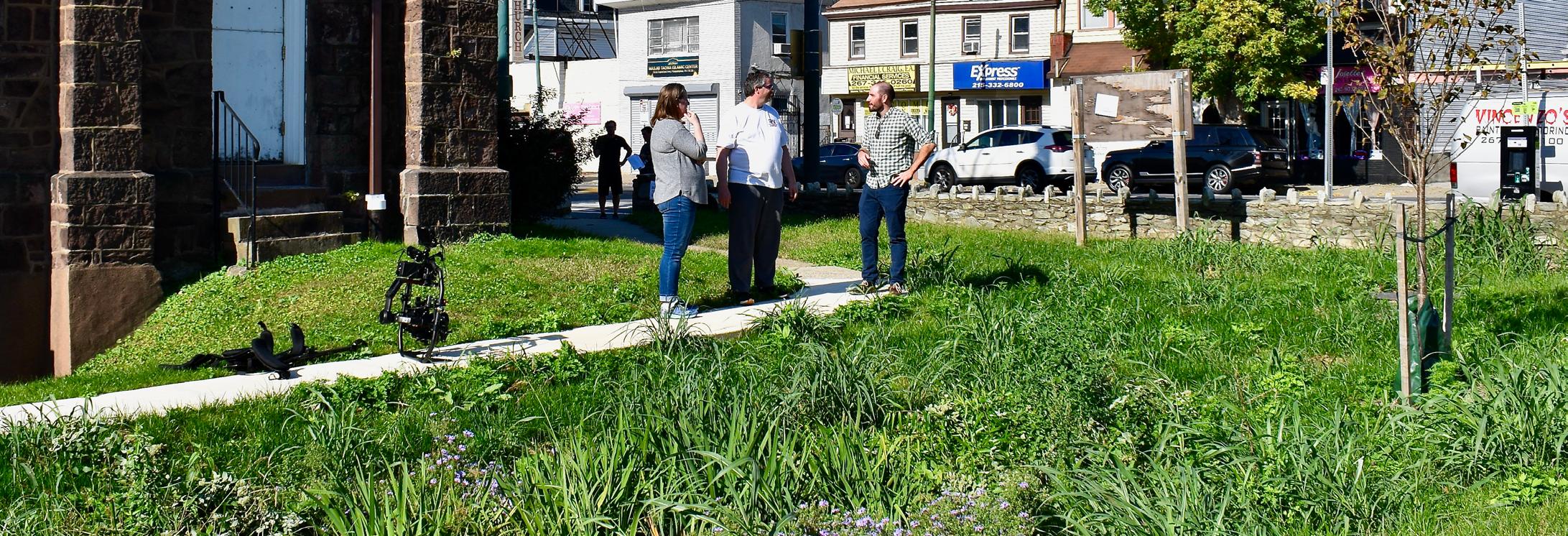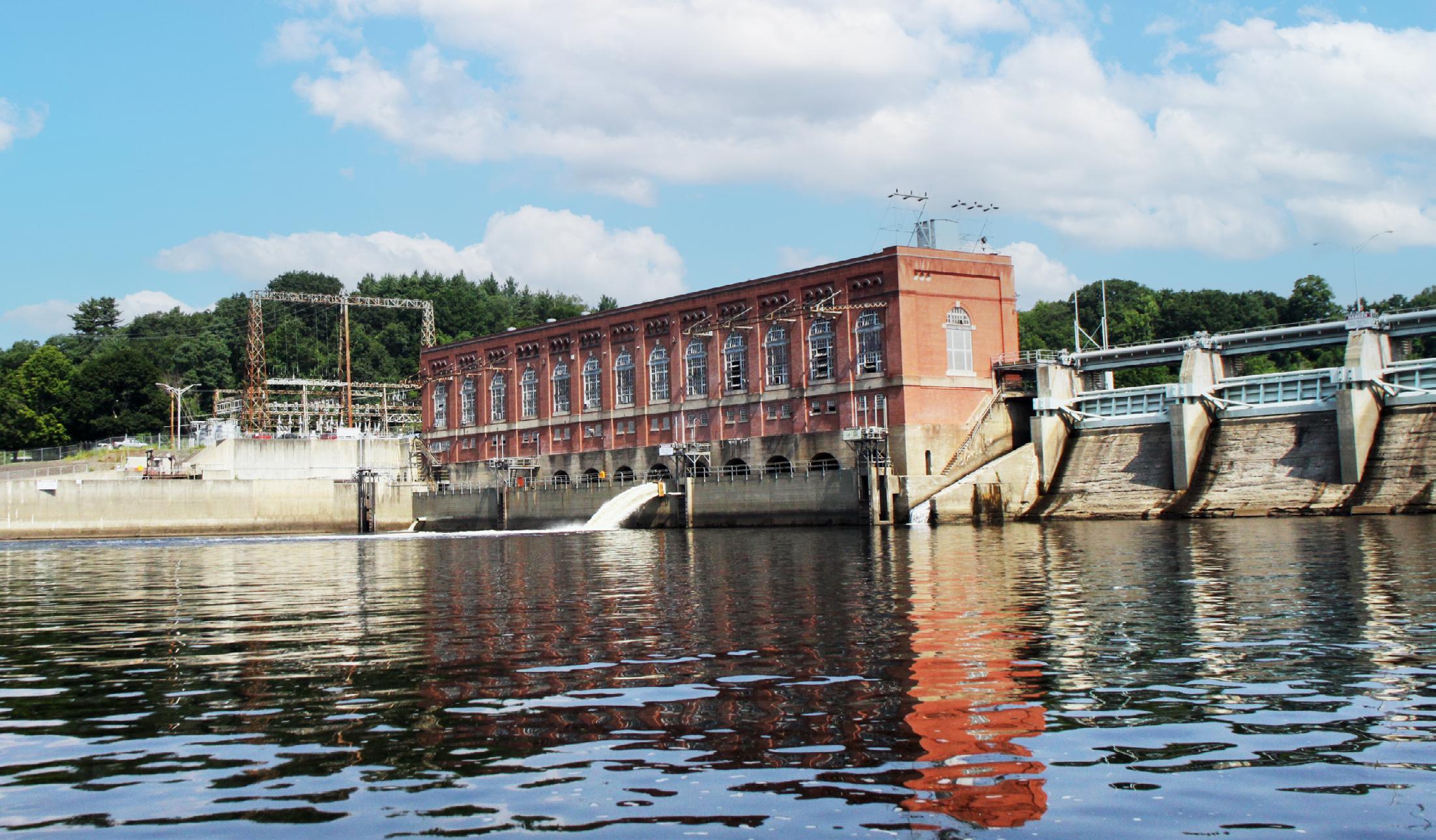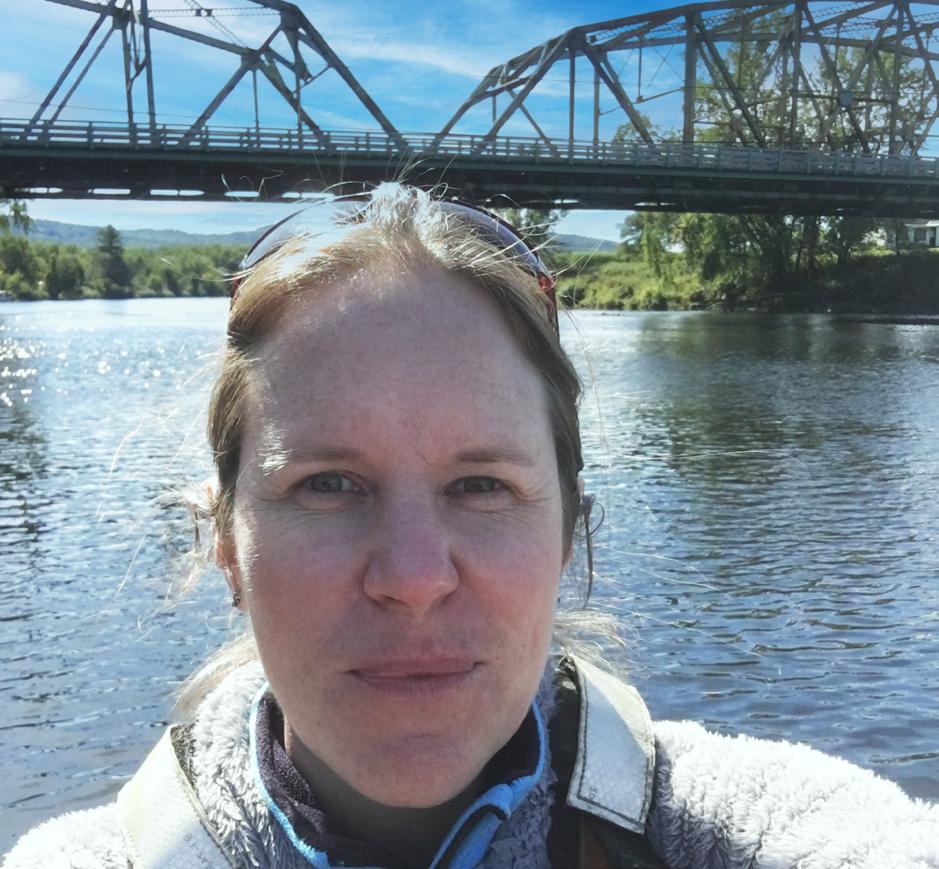
4 minute read
Benefits Flow from New Rain Garden at Philadelphia Church
from Bridge Magazine - Volume 2
by PFWTNC
A 19TH-CENTURY CHURCH in one of the oldest neighborhoods in Philadelphia has been renewed, with a little help from nature.
The Holmesburg Baptist Church and Christian Academy in Northeast Philadelphia, Pennsylvania recently became home to an award-winning green stormwater infrastructure (GSI) project that will reduce on-site flooding and help improve water quality in the Delaware River. Through a collaborative partnership between the Philadelphia Water Department and Pennsylvania and Delaware Chapter of The Nature Conservancy, the church retrofitted its existing stormwater infrastructure to incorporate two subsurface retention basins, native plantings, and a rain garden. The GSI systems will retain and filter an estimated 1.4 million gallons of stormwater annually, helping to reduce combined sewer overflows in the watershed.
Advertisement
Green stormwater features have become a popular tool for Philadelphia and cities across the U.S. to reduce local flooding and the impact of stormwater on waterways. Impermeable surfaces—think paved roads, parking lots, and rooftops—cover much of the city’s landscape and prevent the absorption of water into the soil below during periods of rainfall, causing runoff and a slew of water pollution issues. The EPA describes stormwater as “one of the fastest-growing sources of pollution” in the United States.
For the Holmesburg community, this GSI project is a win on multiple fronts. The church’s new stormwater systems reduce the amount of harmful nutrients and other contaminants flowing into the nearby Pennypack Creek during storms and helps mitigate flooding at the church. Plus, the rain garden will save the church money on its monthly water bill and establish a habitat for pollinators and native plants.

Cliff Kilbride is a member of the Holmesburg Baptist Church and was an early proponent of the project. “With both the church and myself having such deep roots in this community, this project was a way to give back,” said Kilbride. “By stepping in and doing some small part to help clean up our waterways, we preserve our past for our kids and give them the same opportunity to enjoy the delights and wonders of nature that we enjoyed as kids.”
Green stormwater infrastructure projects like this are being implemented by TNC across Philadelphia and in cities throughout the U.S. in close partnership with local communities and municipalities. Establishing a network of GSI systems in a city has the potential to capture billions of gallons of stormwater per year. Philadelphia, for instance, has set a goal of capturing and treating upwards of 8 billion gallons of stormwater by 2036. The positive impact these scalable projects have on communities are a testament to their potential to build resilient, sustainable, and beautiful cities where people and nature can thrive together.
Innovative Solutions for Healthy Rivers and Clean Energy
THE CONNECTICUT RIVER is New England’s largest and longest river system. In fact, its original Algonquin name is quinnehtukqut, meaning “long tidal river.” The Connecticut once supported many species of fish and invertebrates, including at least 13 species of migratory fish that traveled hundreds of miles, some from Long Island Sound all the way north to Vermont and New Hampshire. Today, the river supports 13 hydropower projects along the length of its mainstem. The largest of these provide critical stability for New England’s increasingly renewabledependent energy grid. The generation of hydropower, however, has come at the expense of ecosystem health, at times leaving power companies and environmental agencies and organizations at odds.
The value that some of these projects provide to the New England grid comes from their role as “peaking” projects. A peaking hydropower project holds water in a reservoir when energy demand is low and waits to release that water when energy demand is high. Because energy prices are correlated with demand, peaking can be highly profitable for power companies. However, the resulting rapid and frequent changes from low to high flow extremes can also be detrimental to river ecosystems and the species they support. disrupted the migration, spawning, feeding behavior and habitats of the river’s native biota, severely compromising the health of the river ecosystem. But because of how important these projects are to the region’s climate change mitigation goals, Dr. Kennedy knew that a solution for the Connecticut River would require out-of-the-box thinking—and a collaborative spirit. Meaningful solutions could only be developed by working with the power companies, not against them.

After many years of learning, researching, discussing and deliberating, the persistence of Kennedy and her partners paid off. In 2020, a modeling experiment conducted by engineers at the University of Massachusetts showed that, due to the volatility of energy prices, hydropower companies make most of their revenue in only a fraction of the hours they typically operate.
This finding led to seventy-two hours of meetings where Kennedy and a group of fellow stakeholders worked with the power company to draft a brand-new operations plan. Under the new plan, peaking would be limited to only 5% of the hours in a year. For the rest, the river would flow freely, allowing migratory fish to move, freshwater mussels to spawn and tiger beetles to hunt prey without interruption. At the same time, the company determined that they would continue to meet the needs of the energy grid and still maintain 99% of their annual revenue generation—even better than Kennedy and her partners expected.
The Connecticut River solution is a novel strategy that emphasizes the power of sitting down, listening, thinking, and working with all stakeholders—especially those with opposing interests. Kennedy explains that solutions like this are far too scarce in the hydroelectric sector, and that they are needed now more than ever. “It can seem like the hydropower industry is riding the clean energy wave. Sometimes it feels like they’re saying, ‘You can’t touch us because you need us.’ But if we don’t acknowledge the impacts, we won’t find the solutions. And there are solutions. We just have to put in the effort, work together, and use our noggins.”
Where complex conservation issues exist interwoven in the power sector, Kennedy sees opportunities for collaboration. And she hopes her team’s work can serve as an example for how better collaboration can inform more effective, integrated conservation solutions. “Success is only limited by our collective willingness to collaborate and listen to each other.”
This was exactly the case on the Connecticut River. Dr. Katie Kennedy, an applied river scientist for TNC’s North America Region, says that for decades, peaking operations have largest peatland in North America, led by the Omushkego Cree.











